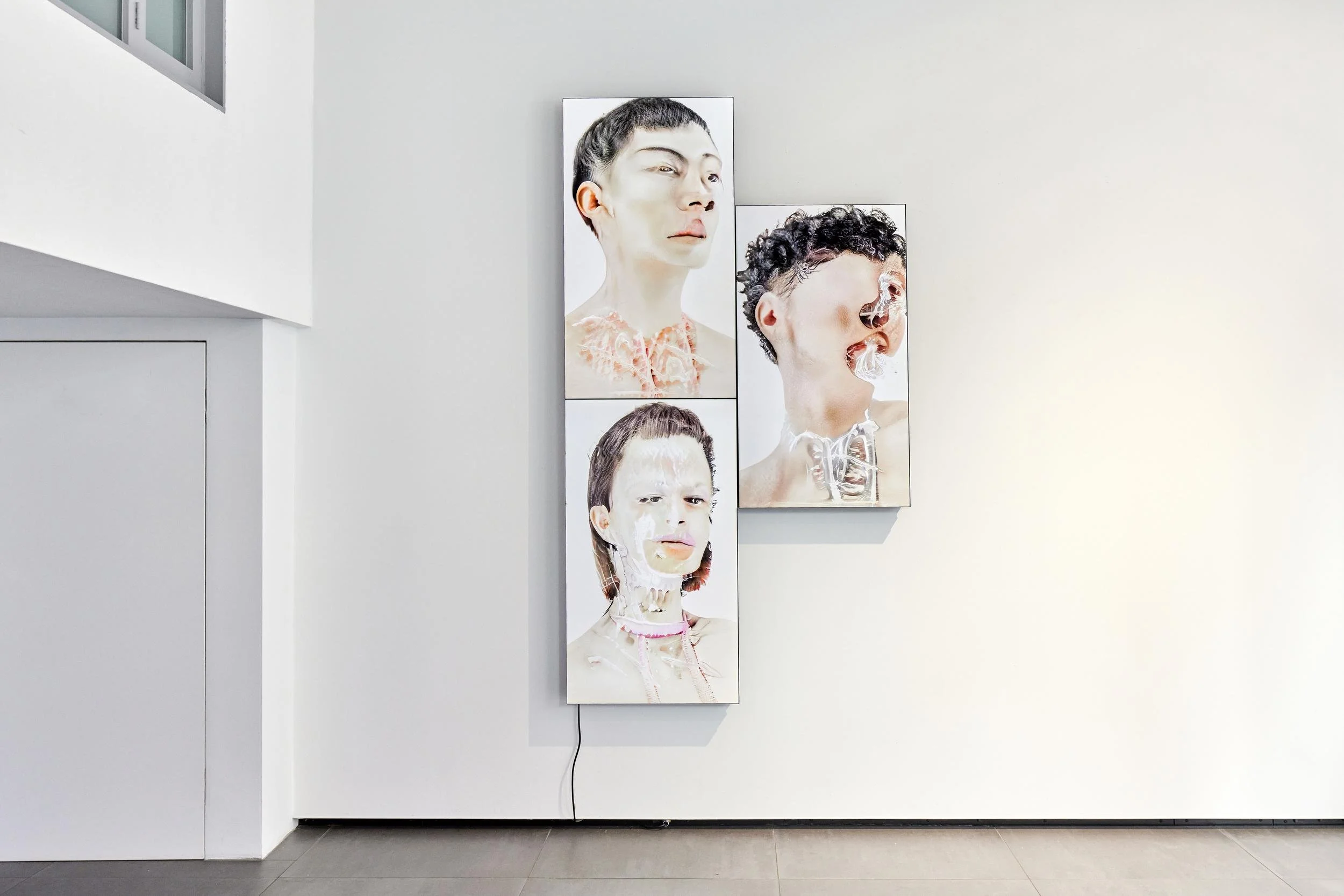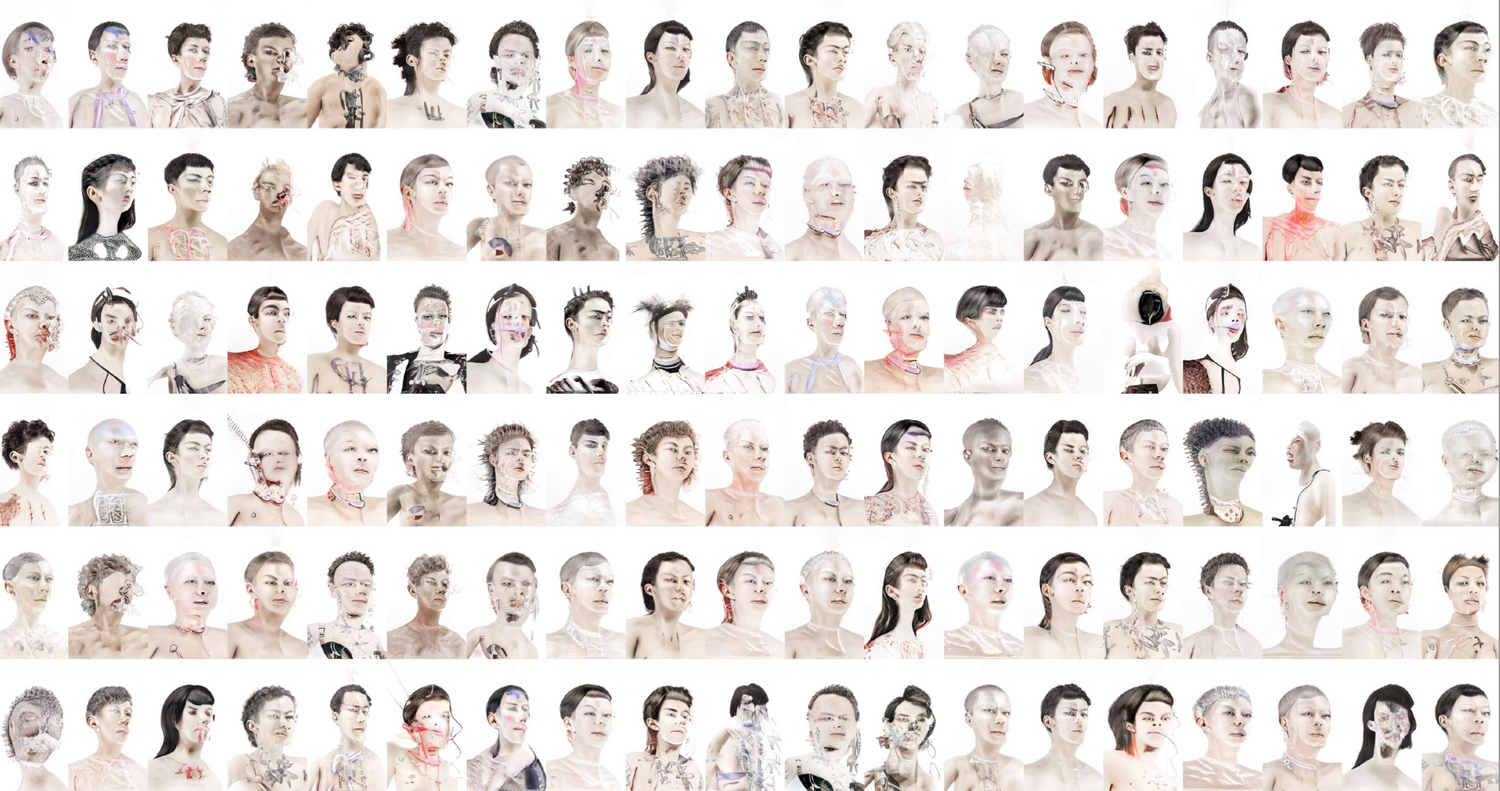Landscapes / A Picture Can’t Take Me
GAN generated images have a history that long precedes the world of AI generated images that has exploded in the last few years, redefining what we recognize the medium to be. In contrast to the rise of AI image tools like Midjourney and Stable Diffusion, there are contemporary artists who are using GAN image generation in visually and experientially distinct ways. This includes the work of artist collective Crosslucid with their Landscapes series, and Brazilian installation artist Cibelle Cavalli Bastos, with A Picture Can’t Take Me.
Lαɳdʂcαpeʂ 00t09 was released as an NFT by Crosslucid in 2022. The work presents a slowly evolving abstract human portrait juxtaposed with topographic and bionic elements; the emergent portraits shift continuously, refusing any singular racial or gendered identity. First published as a collection of covers for Slanted magazine, the images at times refuse portraiture, appearing more as still life or topography maps. These humanoid forms are the result of a custom generative adversarial network (GAN), trained on Crosslucid’s book of portrait-esque creations; Landscapes Between Eternities.
The use of GAN portraiture to disrupt a sense of identity around gender is also deployed by Cibelle Cavalli Bastos with their NFT A Picture Can’t Take Me. In the video artwork, Cibelle presents a series of outputs of generative portraiture using StyleGAN2, a more sophisticated version of GAN neural network architecture. In this piece, the network is trained on a data set of Google search pictures of Cibelle when they were known as a cis woman singer, and selfies from a personal archive recording the artist’s transition to non-binary and aging, presenting an evolving format of GAN self-portraiture. The piece presents several images outputs from the network, over an AI generated music track, with a poem about the failure of technology to accurately capture identity coauthored by GPT2 and the artist superimposed on top of the images.
Linking the development of technology to the dissolving of structures of identity around gender and race can be linked to many sources, a foundational one being Donna Haraway’s A Cyborg Manifesto. The text proposes a “cyborg” theory, calling for non-essentialized politics capable of uniting loose social and political coalitions in terms of affinity rather than identity. Her assertion for this lies in her belief that technological advances are capable of diffusing structures of identification along the lines of race, gender, and even species. Haraway mentions authors and theorists, including Octavia Butler, as references to cyborg narratives.
In Butler’s Xenogenesis trilogy, humans are forced to coexist with other species through colonial acts of genetic alteration, producing hybrid communities and individuals. In this narrative, the unraveling of the human body is one of liberation – it is by undoing the body that Butler signifies the changes necessary to create a society freed from hierarchical violence. This undoing of the body as we know it is present as a core underlying component in both Crosslucid and Cibelle GAN portraits. In Crosslucid’s work the human form as we understand it is undone to the point that it is no longer recognizable as fully human, an on the other side emerges something that is human without the identifying and dividing complexities of humanity. In Cibelle’s work a singular body is broken into multitudes, asserting that spiritual wholeness is not dependent on being physically complete.
The use of technology to dissolve gender is not a hypothetical concept. Advancements through medical technology like Hormone Replacement Therapy and Gender Affirming Surgery allow not only for “switching” genders, but to move towards physically embodying a state of being that is beyond binary gender, as Cibelle presents in A Picture Can’t Take Me. These forms of medical care have received more national visibility in recent years – combined with the continuous dissolving of archaic gender norms that dictated normative roles within home and work – leading to a moral panic around the erosion of the institution of the gender binary.
References:
Becoming Medusa: Octavia Butler's "Lilith's Brood" and Sociobiology – J. Adam Johns
Donna Haraway – A Cyborg Manifesto
Landscapes Between Eternities – Crosslucid
A Picture Can’t Take Me – Cibelle Cavalli Bastos
Postgenderism: Beyond the Gender Binary – James Hughes
We are all cyborgs: How machines can be a feminist tool – Nour Ahmad
Williams Institute – New estimates show 300,000 youth ages 13-17 identify as transgender in the US










